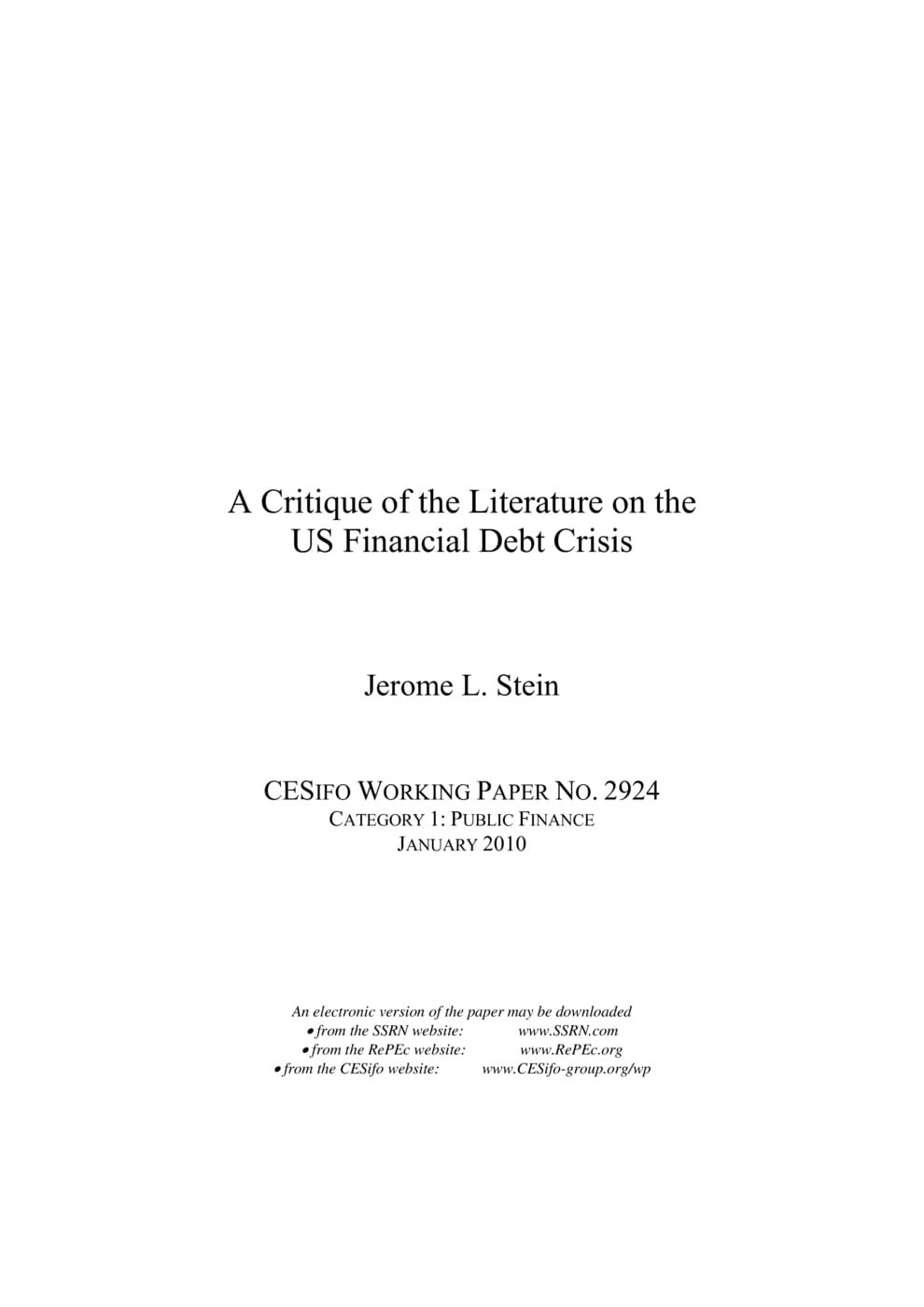A Critique of the Literature on the US Financial Debt Crisis
CESifo, Munich, 2010
CESifo Working Paper No. 2924

A healthy financial system encourages the efficient allocation of capital and risk. The collapse of the house price bubble led to the financial crisis that started in 2007. There is a large empirical literature concerning the relation between asset price bubbles and financial crises. I evaluate the key studies with the respect to the following questions. To what extent do the empirical relations in the existing literature help to identify asset price bubbles ex-ante or ex-post? Do the empirical studies have theoretical foundations? On the basis of that critique, I explain why the application of stochastic optimal control (SOC)/dynamic risk management is a much more effective approach to determine the optimal degree of leverage, the optimum and excessive risk and the probability of a debt crisis. The theoretically founded early warning signals of a crisis are shown to be superior, in general, to those empirical relations in the literature. Moreover the SOC analysis provides a theoretical explanation of the extent that the empirical measures in the literature can be useful.
Public Finance